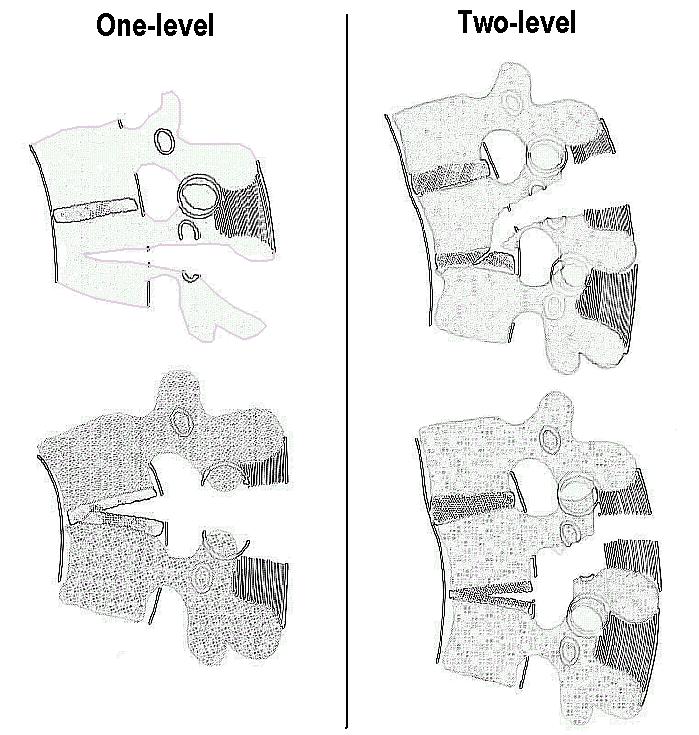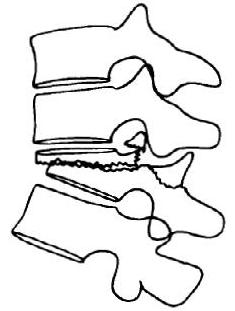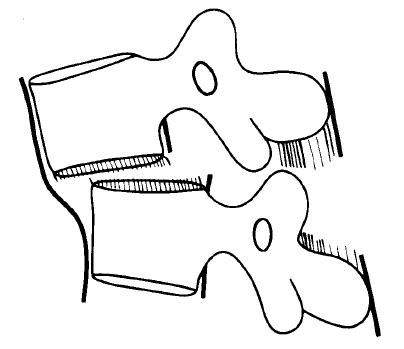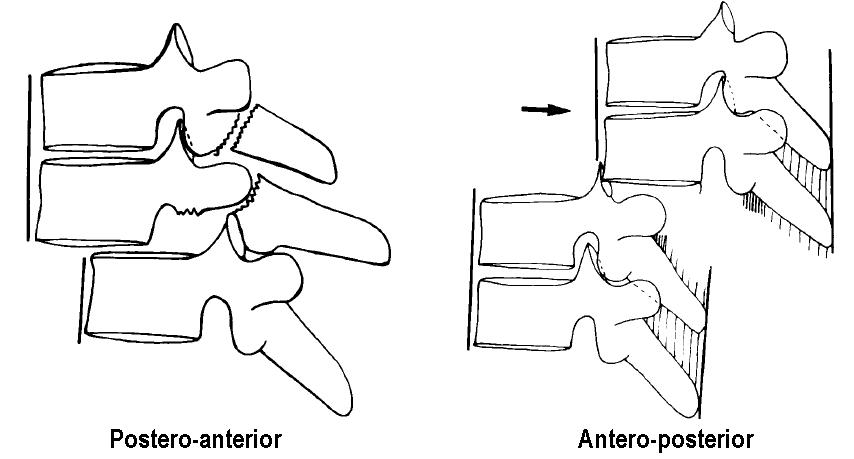
Name and Synonyms
Denis Classification, Denis Classification of Spinal Fractures, Denis Classification of Thoracolumbar Fractures.
See also: Denis Scales.
Source Article
Denis F. The three column spine and its significance in the classification of acute thoracolumbar spinal injuries. Spine (Phila Pa 1976). 1983 Nov-Dec;8(8):817-31.
Description
This is a spinal injury classification system based on radiological findings (and proposed tissues affected). US orthopedic surgeon Francis Denis have devised the concept from a retrospective review of 412 thoracolumbar spine injuries and observations on spinal instability (see references). Denis divides the spinal motion segment into three colums. With the author's own words "The posterior column consists of what Holdsworth described as the posterior ligamentous complex. The middle column includes the posterior longitudinal ligament, posterior annulus fibrosus, and posterior wall of the vertebral body. The anterior column consists of the anterior vertebral body, anterior annulus fibrosus, and anterior longitudinal ligament". For more detailed description, click Denis' three-column theory.According to Denis' system, spinal traumas are classified to minor and major injury (see table below), based on their potential risks to cause instability. The minor injuries represented by fractures of transverse processes, articular processes, pars interarticularis, and spinous processes involve only a part of the posterior column and do not lead to acute instability. Major spinal injuries are classified into four categories, all definable in terms of the degree of involvement of each of the three columns, namely: COMPRESSION, BURST, SEAT-BELT-TYPE , and FRACTURE-DISLOCATION type fractures. Each type of fracture also may be divided some subclasses based on severity of the damage.
COMPRESSION FRACTURE: It is a failure under compression of the anterior column. The middle column is intact and acts as a hinge. There may be a partial failure of the posterior column, indicating the tension forces at that level. Competent middle column prevents the fracture from subluxation or compression of the neural elements by retropulsion of the fragments of the posterior wall into the canal.
Four subtypes of compression
fractures can be identified:
|
|
Subtypes of burst fractures according to Denis. |
SEAT-BELT-TYPE INJURY: Both posterior and middle columns fail due to hyper-flexion and subsequent tension forces. The anterior part of the anterior column may partially damaged under compression, but still functions like a hinge. There is no subluxation, and spine is maily unstable in flexion. Seat-belt injuries may be divided to two subtypes (see the picture below).
 |
Subtypes of seat-belt-type
fractures according to Denis. Left side: One-level injury [Upper: through bone (Chance fracture), Lower: through ligaments and disc] Right side: Two-level injury. (Upper: through ligaments at the level of the middle column, Lower: through ligaments at the level of the middle column) |
FRACTURE-DISLOCATIONS: Presents with failure of all three columns under compression, tension, rotation, or shear. It is similar to seat-belt-type injury. However, the anterior hinge is also disrupted and some degree of dislocation is present. There are three subtypes of fracture-dislocations bsed on mechanism of injury: flexion rotation, flexion distraction, and shear.
|
 |
|
 |
|
 |
Scientific Spine's Comment
Denis' classifcaiton was a major step to understand spinal trauma.
References
Denis F. Updated classification of thoracolumbar fractures. Orthop Trans 6: 8-9, 1982
Denis F. The three column spine and its significance in the classification of acute thoracolumbar spinal injuries. Spine (Phila Pa 1976). 1983 Nov-Dec;8(8):817-31.
Denis F. Spinal instability as defined by the three-column spine concept in acute spinal trauma. Clin Orthop Relat Res. 1984 Oct;(189):65-76.
Dennis
F., Armstrong G. W. D., Searls K., Matta L. Acute thoracolumbar burst
fractures in the absence of neurologic deficit ; a comparison between
operative and non-operative treatment. Clin. Orthop., 1984, 189,
142-149.
Any comment about this page?
Your feedback is appreciated. Please click
here.
To join Scientific Spine mailing list, click here.
You are here: Scientific Spine > Spine Scores > Spine Scores Classified > Trauma Scores > Spine Trauma Scores > Denis Classification
Try also:
Complete
Alphabetical List of Spine Scores